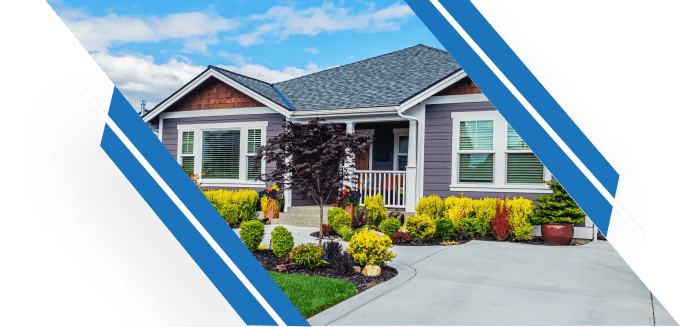Your home’s siding is more than just a beautiful exterior finish, it’s your property’s first line of defense against Tampa’s challenging weather conditions. From intense UV exposure and hurricane-force winds to torrential downpours and high humidity, Florida homes face unique environmental stressors that can affect siding’s performance over time. Regular siding inspections are a major way to prevent problems and help homeowners avoid expensive structural damage while maintaining both curb appeal and property value.
Professional siding inspections detect early warning signs that might otherwise go unnoticed until significant damage occurs. Cracked panels, warping, moisture infiltration, and pest intrusion can all develop gradually beneath the surface. By establishing a routine inspection schedule, Tampa homeowners can identify these issues before they escalate into major repairs that not only impact the exterior, but potentially the entire structural framework of the home.
*Please note, price ranges listed in this article may not reflect the final cost of your project. Prices are subject to change based on various factors such as local labor rates, material quality, and more. All costs established in this article are rough estimates based on average industry rates.
Warning Signs That Your Home’s Siding Needs Attention
Recognizing the early warning signs of siding problems saves Tampa homeowners thousands in potential repair costs. Visual indicators are often the first clues that your siding requires professional assessment. Watch for warping or buckling panels, which typically indicate water has gotten behind the siding. Cracking, splitting, or holes, no matter how small, also create entry points for moisture and pests. Bubbling or blistering suggests trapped water vapor, while significant color fading beyond normal weathering points to a material breakdown caused by Florida’s intense sun exposure.
Some siding issues reveal themselves through less obvious symptoms. For instance, a sudden increase in energy bills may indicate that your siding is no longer providing proper insulation. Interior moisture problems like peeling wallpaper, water stains, or mold growth, particularly after heavy Tampa rainstorms, often signal siding failures, and unusual pest activity might also mean insects have found entry through compromised siding sections.
Creating an Effective Siding Inspection Schedule for Florida Homes
Florida’s unique climate demands a strategic approach to siding maintenance. For Tampa homeowners, timing your siding inspections around seasonal weather patterns maximizes your home’s protection and extends the lifespan of your exterior materials. The most critical inspection should occur in early spring (April to May), before hurricane season begins. This allows time for vulnerabilities to be addressed before severe weather strikes. A second thorough inspection should follow in November, after storm season ends, to assess any damage and prepare for winter months.
Your chosen siding material will also impact how often you should inspect your house’s siding. Vinyl siding typically requires inspection every 6 months in Tampa’s climate, while fiber cement may only need checks annually. Homes with wood siding demand quarterly inspections due to humidity concerns. Newer installations generally require less frequent monitoring than older siding systems, but properties with direct gulf exposure or homes surrounded by trees should add supplemental checks regardless of material type.
The cost of delaying siding repairs far outweighs regular maintenance expenses. What begins as a minor issue can quickly escalate in Florida’s harsh climate. Professional siding inspection benefits include comprehensive moisture testing, infrared scanning for hidden damage, and expert assessment of fastening systems that may have loosened during temperature fluctuations. Tampa roofing contractors experienced in Florida building codes can identify vulnerabilities that homeowners might miss, ensuring your home exterior maintenance inspections yield maximum protection.
The Hidden Costs of Neglecting Siding Maintenance
What starts as a seemingly minor siding issue can quickly transform into an expensive nightmare for Tampa homeowners. In Florida’s uniquely humid climate, small cracks or loose panels create entry points for moisture that silently damage your home’s structural framework. This trapped moisture doesn’t just weaken support beams, it also creates the perfect breeding ground for mold and mildew that can spread throughout wall cavities. Even more concerning, compromised siding significantly reduces your home’s insulation effectiveness, forcing air conditioning systems to work overtime during Tampa’s sweltering summers.
The financial implications of postponing siding maintenance are substantial. Consider that regular inspections and minor repairs typically cost around $200 to $500 annually, while complete siding replacement on an average Tampa home can exceed $15,000. Factor in additional expenses for mold remediation ($2,000 to $6,000), structural repairs ($5,000 to $25,000), and increased energy bills (up to 30% higher), and the cost difference becomes impossible to ignore. Signs of siding damage to look for early, such as warping, discoloration, or loose sections, serve as valuable warnings that could save thousands in preventable damage.
Professional siding inspection benefits extend beyond a detailed, high-quality damage assessment. Experienced Tampa roofing contractors can identify vulnerable areas before they fail, recommend appropriate preventative treatments for Florida’s weather patterns, and document your maintenance history, which proves valuable when you face insurance claims after severe weather events. The importance of regular siding inspections becomes clear when comparing the modest investment in preventative care against the substantial financial burden of extensive restoration.
DIY vs. Professional Siding Inspections: Making the Right Choice
Tampa homeowners have options when it comes to monitoring their siding’s condition. While professional inspections provide comprehensive assessment, basic visual checks can be performed by attentive homeowners between professional visits. For DIY inspections, you’ll need basic tools, including binoculars for viewing higher sections, a flashlight to examine shadowed areas, and a screwdriver to gently test for rot along wooden components. You should pay particular attention to south-facing walls that receive the most UV exposure in Tampa, areas beneath eaves where moisture can collect, and sections near sprinkler systems where water repeatedly comes in contact with the siding.
Despite the value of homeowner care, certain situations demand professional expertise. Contact a qualified contractor if you notice warping across multiple panels, significant color changes, or if your home has recently weathered a severe storm. Professional siding inspections typically include moisture meter readings, thermal imaging to detect hidden water issues, and an evaluation of support structures that DIY inspections might miss.
The professional advantage becomes particularly valuable for older homes or properties with previous siding issues. Trained inspectors can spot early signs of material failure specific to Tampa’s humidity and salt exposure, potentially saving you hundreds of dollars in future repairs while ensuring your home remains protected year-round.
How Quality Siding Protects Your Tampa Home
Your Tampa home represents one of your most significant financial investments, and quality siding plays a crucial role in protecting that investment. Properly maintained siding does more than enhance curb appeal, it creates a protective barrier against Florida’s extreme weather conditions, preventing moisture infiltration that can lead to structural damage. In Tampa’s unique climate, where homes face hurricane-force winds, intense UV radiation, and high humidity levels, durable siding can mean the difference between minor maintenance and major repairs.
Different siding materials perform differently in Tampa’s challenging environment. Vinyl offers excellent value and water resistance but may warp in extreme heat. Fiber cement provides superior durability against humidity and storms but requires professional installation. Engineered wood delivers aesthetic appeal with improved moisture resistance over traditional wood options. Each material demands different types of inspections as well. For instance, vinyl requires checking for warping and loose panels, while fiber cement should be examined for cracking and moisture penetration along seams.
The benefits of reliable siding extend beyond protection to include significant energy efficiency improvements and enhanced resale value. Professional siding inspection benefits Tampa homeowners by identifying potential vulnerabilities before they compromise your home’s structural integrity. By understanding how often to inspect house siding based on your specific material and exposure conditions, you establish a proactive approach to home exterior maintenance that preserves your property’s value for years to come.
Taking Action: Next Steps After Your Siding Inspection
After completing a thorough siding inspection, you have to address the issues you’ve found as soon as you can. Professional inspections typically categorize findings into three priority levels: urgent concerns requiring immediate attention, moderate issues that should be addressed within 3 to 6 months, and minor maintenance items that can be scheduled during routine upkeep. Water infiltration, structural damage, and extensive rot fall into the urgent category, as Florida’s humidity can rapidly accelerate deterioration once moisture breaches your home’s exterior defense.
For moderate concerns like isolated cracks, loose panels, or early signs of wear, planning repairs before Tampa’s rainy season provides optimal protection. Consider creating a seasonal maintenance calendar that aligns with Florida’s weather patterns and schedule major repairs during drier months while performing regular cleaning and minor fixes year-round to help extend your siding’s lifespan considerably.
Tampa homeowners have numerous resources available for siding maintenance and repair. Local building supply stores offer DIY materials for minor fixes, while professional roofing contractors provide comprehensive repair services for more complex issues. Consider weather-resistant siding options specifically designed for Florida’s climate when replacements become necessary. Preparing your home’s exterior for hurricane season should include securing loose panels, sealing gaps, and removing debris that could become projectiles during storms. By addressing siding issues promptly, you’ll protect your investment while avoiding the significant cost of delaying siding repairs.
Expert Siding Inspections in Tampa Bay: Protect Your Home Today
Don’t wait until your siding issues become expensive disasters. At SouthShore Roofing & Exteriors, we understand how Tampa Bay’s unique climate challenges your home’s exterior. Our professional siding inspection services identify problems before they compromise your home’s structural integrity, energy efficiency, and value.
After reading about the importance of regular siding inspections, why risk your biggest investment? Our experienced team provides comprehensive assessments, honest recommendations, and quality repairs that stand up to Florida’s harsh weather conditions.
Protect your Tampa home today by scheduling your professional siding inspection with us. Call SouthShore Roofing & Exteriors at (813) 400-3329 to speak with one of our siding experts and enjoy peace of mind, knowing your home is properly protected.




